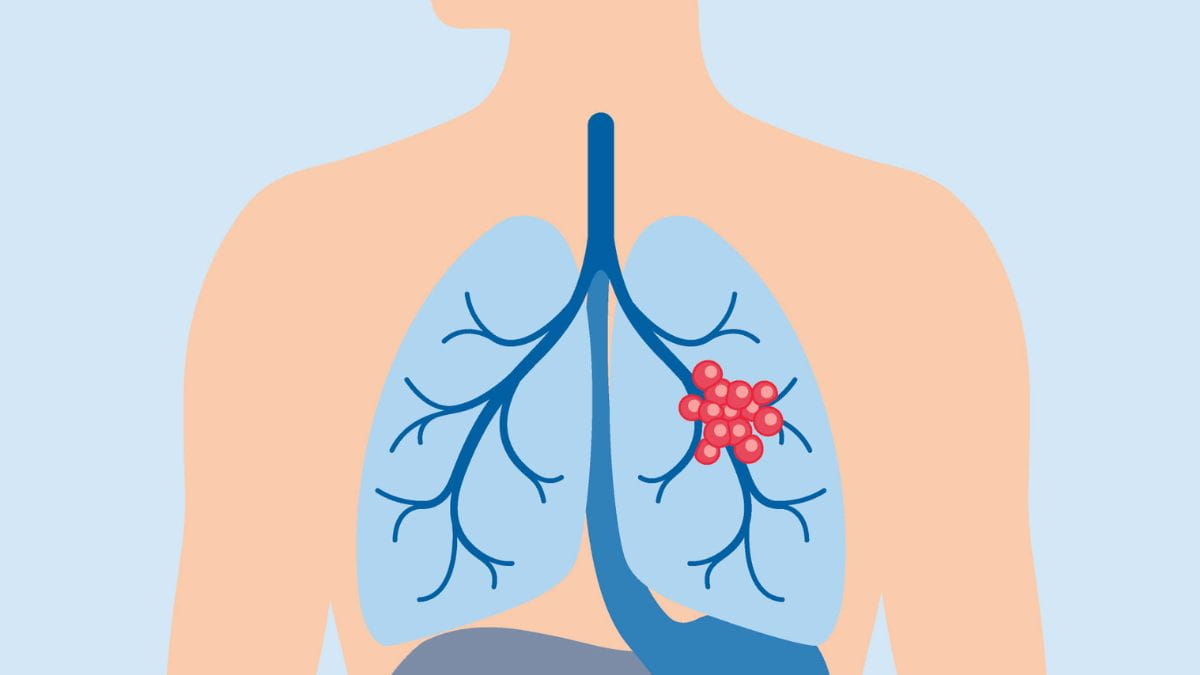
In the shifting landscape of lung cancer detection and care, biomarkers like EGFR, ALK and KRAS have emerged as powerful tools. Yet, testing for these markers, particularly in the early stages of cancer, can be inconsistent for NSCLC patients. A clinician and a patient shed light on the issue, and the empowerment and advances that can come with this knowledge.
There are no pain receptors in the lungs, which is why people don’t notice.
Colin Lindsay MBChB, PhD, Clinical Senior Lecturer, University of Manchester and Consultant Medical Oncologist, Christie Hospital
Unfortunately, the majority of lung cancer patients around the world are not having the biomarker profiling that they deserve to put them in the best treatment scenario.
Colin Lindsay MBChB, PhD, Clinical Senior Lecturer, University of Manchester and Consultant Medical Oncologist, Christie Hospital
If a patient relapses, we should be able to use biomarker-driven studies to devise newer and better treatments for those patients.
Colin Lindsay MBChB, PhD, Clinical Senior Lecturer, University of Manchester and Consultant Medical Oncologist, Christie Hospital
Every patient should be informed of their biomarkers. It gives us, the patients, the information we need to know to find out what may or may not work for us so we can ask the experts the right questions.
Terri Conneran, Founder of KRAS Kickers and Board Member of LiveLung
We have effective targeted therapies, which are prolonging lives, but we need much more study on combined treatments.
Marzia Del Re, PhD, assistant professor, Clinical Pharmacology and Pharmacogenetics Unit, University of Pisa
February 2024
Related content
References:
- GLOBOCAN 2020. https://gco.iarc.fr/today/ Accessed: November 2023
- National Foundation for Cancer Research. https://www.nfcr.org/blog/why-is-lung-cancer-so-deadly/ Accessed: November 2023.
- American Cancer Society. Cancer facts & figures 2023. https://www.cancer.org/research/cancer-facts-statistics/all-cancer-facts-figures/2023-cancer-facts-figures.html Accessed: November 2023.
- American Cancer Society: Key statistics for lung cancer. https://www.cancer.org/cancer/types/lung-cancer/about/what-is.html. Accessed: November 2023.
- Tsuboi M, et.al. Overall survival with osimertinib in resected EGFR-mutated NSCLC. N Engl J Med. 2023;389:137-147.
- Reckamp KL, et al. Indirect comparisons of brigatinib and alectinib for front-line ALK-positive non-small-cell lung cancer. Future Oncol. 2022;18(20):2499-2510.
- Pakkala S, Ramalingam SS. Personalized therapy for lung cancer: striking a moving target. JCI Insight. 2018;3(15):e120858.
- Xie M, Xu X, Fan Y. KRAS-mutant non-small cell lung cancer: An emerging promisingly treatable subgroup. Front Oncol. 2021:11:672612.
- Forde PM, et.al. Neoadjuvant nivolumab plus chemotherapy in resectable lung cancer. N Engl J Med. 2022;386:1973-1985.
- Spigel DR, et. al. Five-year survival outcomes from the PACIFIC Trial: Durvalumab after chemoradiotherapy in stage III non-small-cell lung cancer. J Clin Oncol. 2022;40(12):1301-1311.
- Data presented at the American Society of Clinical Oncology annual meeting 2023.
- Hess LM, Krein PM, Haldane D, Han Y, Sireci AN. Biomarker testing for patients with advanced/metastatic nonsquamous NSCLC in the United States of America, 2015 to 2021. JTO Clin Res Rep. 2022;3(6):100336.





